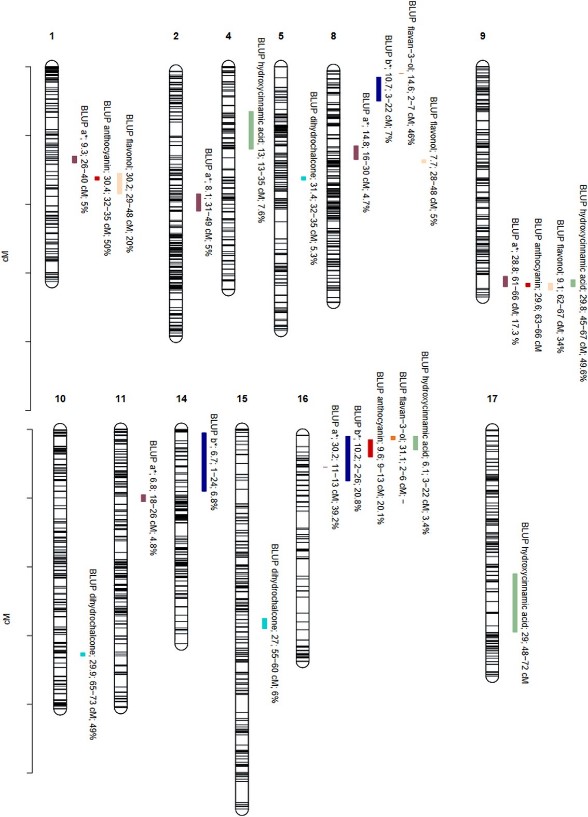Conducted by a team from the University of Angers and Institut Agro, and published (DOI: 10.1093/hr/uhae171) in Horticulture Research on June 27, 2024, this study explored the genetic architecture of red-flesh pigmentation in apples using pedigree-based quantitative trait loci (QTL) mapping. The research assessed 452 genotypes from five interconnected F1 families, pinpointing genetic regions that influence flesh color and phenolic profiles, offering valuable insights for future breeding.
The study identified 24 QTLs associated with red-flesh color intensity and phenolic profiles, spanning multiple genetic loci, including LG1, LG2, LG8, LG9, LG11, and LG16. A key finding was a genetic model highlighting the competition between anthocyanin and flavan-3-ol synthesis, which significantly impacts red-flesh development. The research demonstrated that the intensity of red-flesh pigmentation could be enhanced by selecting favorable alleles from both red- and white-flesh apple parents, offering a strategic approach for targeted breeding. This method moves beyond traditional color assessments by incorporating quantitative descriptors that capture the nuanced genetic interactions influencing apple flesh color. The discovery of these genetic regions not only deepens the understanding of red-flesh pigmentation but also provides a valuable framework for breeders to develop new apple varieties with improved coloration and potential health benefits.
Dr. Jean-Marc Celton, the lead author, commented, “Our findings unravel the complex genetic factors behind red-flesh pigmentation in apples. Understanding the interaction between phenolic compounds and genetic elements brings us closer to creating apple varieties that combine striking color with nutritional value. This research opens up new possibilities for breeding high-quality red-flesh apples.”
These findings hold significant promise for apple breeding programs. By targeting QTLs related to anthocyanin and flavan-3-ol balance, breeders can produce red-flesh apples that appeal aesthetically and offer health benefits. The study’s insights could extend to other fruit species with similar pigmentation traits, potentially transforming horticultural crop improvement on a broader scale.
###
References
DOI
Original Source URL
https://doi.org/10.1093/hr/uhae171
Funding information
This material is based upon work supported by the ANRT (Association nationale de la recherche et de la technologie) with a CIFRE fellowship granted to Pierre Bouillon (convention N° 2021/0182), supported by IFO and IRHS.
About Horticulture Research
Horticulture Research is an open access journal of Nanjing Agricultural University and ranked number two in the Horticulture category of the Journal Citation Reports ™ from Clarivate, 2023. The journal is committed to publishing original research articles, reviews, perspectives, comments, correspondence articles and letters to the editor related to all major horticultural plants and disciplines, including biotechnology, breeding, cellular and molecular biology, evolution, genetics, inter-species interactions, physiology, and the origination and domestication of crops.


